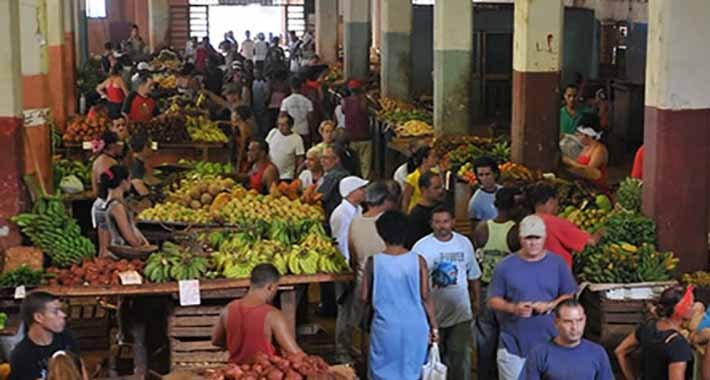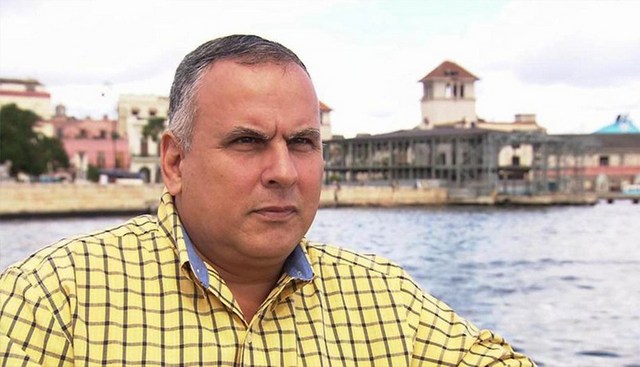
Cuba’s economy jumps on the train again
HAVANA – My emotional state changes quickly these days. When one reads the Granma article on the dangers of including SMEs (small and medium sized enterprises) in Cuba’s development, I wondered whether the criterion was that of the author’s or of those who approve what appears in that publication. Later when I read the report of the last extraordinary session (Saturday, May 9) of the Council of Ministers I felt a bit more optimistic.
One cannot help but feel a certain dose of optimism when Cuba’s president himself states that “we will work to defend the concept that everything pending for the implementation of the actualization of the economic and social model, and the guidelines and bases for the 2030 national economic development plan, be part of what we elaborate and propose.”
And that the principles that we will work under during the post-pandemic period are stated by the situation of the existing economic actors, and the role of the internal market, the resizing of the state and private business sectors, and the regulation of the market to centralized planning (which is not supposed to be what slows the advancement of today’s different productive forces).
I was also encouraged by another proposal made by President Miguel Díaz-Canel who stated: “To answer definitively the lifting of obstacles, and therefore, what we propose must be analyzed with the perspective that there are no obstacles.” Adding, “We will respond to one of the fundamental issues that has always been debated during these years, which is the liberation of the productive forces in the country, and that this liberation of these productive forces has an impact on the economic and social development of the nation.”

The country could be in the presence of a new reform stage which is necessary because it was traversing a grave economic crisis long before COVID-19 became the trigger for the current world disorder. Cuba arrived more worn out than most countries to this pandemic.
Strong macroeconomic imbalances have affected the Island, along with the lack of foreign exchange that have led to drastic cuts in many imports, the reinforcement of the U.S.’s cruel blockade, the precarious economic situation in Venezuela, and the decrease in exports of goods and services, among other known items.
Regarding the upcoming phase, Raúl Castro, the Party’s first secretary, stated that we should “hop on this train and not get off any more.” It also shows clarity about the urgency of modifying the structures of thought prevailing until now and those designed to direct the economy, since doing more of the same cannot achieve different results. In other words, whatever’s the same must be changed.
There’s consensus that our first priority is survival. But the authorities also realize, as they have stated, that when the routine of everyday life is resumed by Cubans, they should not find an economic and social context of increasing impoverishment. The shock is inevitable and already being suffered, but the policies that are developed can make it more bearable and even make a contribution to the growth and development of the Island.
The boldest measures proposed are probably at the economic model level or in the structural and short-term ones, which end up modifying the character of some of its components.
An expansion of the domestic private sector — that since the opening of 2010 tested growth capacity based on engines other than privatization, growing from about 147,000 ‘self-employed’ to more than 620,000 in a pre-COVID-19 stage — and of experiments in state asset management, promoting dynamics of public-private integration, could channel profit maximization actions towards the achievement of national objectives.
Let us replace the list that authorizes approximately 130 activities in the Cuban private sector with one that simply outlines what is not allowed by the gradual continuity of the reforms begun in 2010. This private sector will need smart regulations that encourage competition, eliminates discriminatory practices when compared to the state sector and foreign investors, channels its actions to the generation of foreign currency (through investments and trade), and articulates it, together with the state sector, in satisfying demand and projects of national interest.
Thinking about SMEs is not a slogan, it is validating realities. There are those who still believe that a restaurant with a large influx of tourists is self-employment, or that the head of a workshop is a self-employed worker. But many of these ventures operate as companies, and they should be able to access all the relationships that are legally recognized, which include the import of necessary supplies. The strong ideological component that they want to attach to this issue is not understandable. Countries with similar political systems to ours remain strong and show a very strong presence of SMEs in their economies. It is not a matter of copying their model, but rather of learning the causes that have led to the growth of countries such as China and Vietnam.
State enterprises will still play a key role. The state should empower these by giving their administrators key management roles, not just resource management positions. Why spend energy and resources making state gastronomy efficient — or other similar level activities — since the state has indirect mechanisms for the management of the economy, such as taxes, which may, or may not, encourage certain activities.
It has already been strongly stipulated, although with few apparent results, that increased attention to agricultural production is a matter of the country’s security. It is precisely in the area of food production where the non-governmental sector stands out as being more productive in most areas. More goods and liquidity redirected towards those that have shown a greater capacity to respond in terms of production would be a good way to improve the country’s agricultural performance.
In addition, any effort that increases acquisition of foreign currency is peremptory, even more so because there’s almost no access to multilateral mechanisms —such as the International Monetary Fund, the World Bank, and others — for channeling financial resources. Today, Cuba can only access limited emergency resources through United Nations agencies, such as those granted to confront the pandemic.
The time has come for Cuban authorities to create extraordinary incentives for the arrival of Foreign Direct Investment (FDI) and channeling them to well-identified priorities. Slowness in decision making by the proper authorities, among other impediments, should not be an excuse. As is, the Helms Burton Act already exists and creates great pressure for foreign investors without having to also deal with internal obstacles around the approval process.
Also, the local private sector could be authorized to develop initiatives with foreign capital where their contribution is not necessarily measured in capital but in innovation and knowledge of the Cuban context.
It is vital for Cuba to encourage the arrival of remittances. For this, targeting remittances for productive efforts, rather than for consumption, would be attractive.
The export of medical services and medical equipment, as well as biotechnological and pharmaceutical products, have emerged as options in the current situation. Another good option would be empowering, with new resources, these lines of services and products.
Tourism has changed and, at least for the next several years, will not recover its previous levels of activity, so boosting the sector in view of the scarcity of resources must be done in moderation. Since before the spread of the pandemic a group of academics had questioned the growing investment effort in the tourism sector. They based their assessment on the urgency of recovering other sectors (such as industry and agriculture), the pending maintenance of operational structures, and the high levels of occupancy achieved in recent years. It is about readjusting investments to create effectivity in the foreseeable future and postponing construction plans approved during moments that will not be the same again in at least two or three years.
Another issue that should not be left out of these analyzes is whether or not to have a state monopoly on foreign trade, perhaps assessing the relevance of companies carrying out their own import and export operations. It also seems necessary to study the operation of monopolies in some economic activities, such as telecommunications, vital in the present and future of the country’s internal trade. Healthy competition could benefit all parties.
Although it is difficult to discuss financial issues due to the various proposals and formulas being considered, another matter to define is the monetary and exchange duality. There are many options available to re-dollarize the country’s economy. It would be feasible to take advantage of the national environment that was created at the end of 2019, where people did not want to accept the CUC, and thereby transform everything to Cuban pesos (CUP) and, in parallel, define what the CUP exchange rate would be with respect to foreign currencies, especially the U.S. dollar. It is undoubtedly a tricky topic, but a solution in this regard should not be postponed any longer.
Confusing the strengths of centralization and crisis management in the short term, with the validation of a continued attachment to practices that only drag secular debts with growth and development, will condemn us to an increasingly precarious situation that will continue to mortgage our future as a nation.
What was raised in the last extraordinary meeting of the Council of Ministers could finally give us the pathway to take, that’s if this time around we don’t step off the train.


